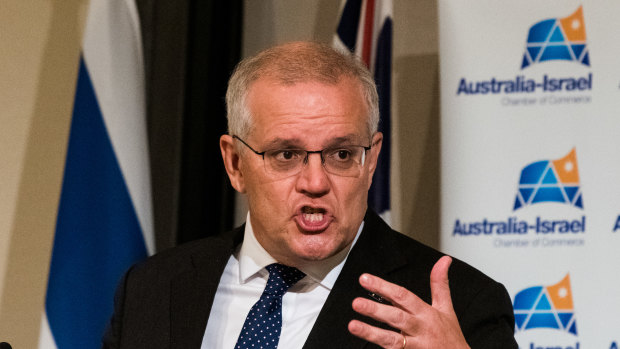This was published 2 years ago
Mind the gap: Real wages suffer biggest fall this century
By Shane Wright
The biggest fall in real wages for Australian workers this century is unlikely to stop the Reserve Bank lifting interest rates next month, increasing financial pressure on home buyers while creating a further political headache for the winner of Saturday’s election.
Economists and financial markets believe the RBA will use its June 7 meeting to lift interest rates to at least 0.6 per cent despite figures from the Australian Bureau of Statistics confirming record cost of living pressures on consumers.
The wage price index increased by a lower-than-expected 0.7 per cent in the March quarter, taking annual wages growth to 2.4 per cent. Over the same period, however, annual inflation was running at 5.1 per cent.
Since the bureau started the wage price index in 1998, annual wage growth has out-paced inflation by an average of 0.5 per cent. The 2.7 percentage gap between inflation and wages is the largest on record.
Inflation has now grown faster than wages for a record seven consecutive quarters. The Reserve Bank expects inflation to remain higher than wages growth until the end of next year.
At the state level, wages are growing fastest in Tasmania at an annual rate of 2.8 per cent. They are growing at 2.6 per cent in NSW and Victoria while the Northern Territory has the weakest growth at just 1.9 per cent.
The ACTU said if the March result held through the rest of the year, workers would lose more than $3200 in real terms.
“Today’s wage growth figures are a disaster for working people. They show that whilst everything else is recovering, wages are not,” ACTU secretary Sally McManus said.
Asia-Pacific economist for job site Indeed, Callam Pickering, said cost of living pressures were clearly hurting Australians.
“After accounting for inflation, Australian wages have collapsed over the past year. The disconnect between wage growth and inflation would be devastating for household budgets across the country,” he said.

Scott Morrison, addressing the Australia-Israel Chamber of Commerce on Wednesday, says bringing inflation under control will help boost real wages.Credit: James Brickwood
Prime Minister Scott Morrison, campaigning in Victoria, said the 2.4 per cent annual growth was slightly above the 10-year average.
He said if unemployment continued to fall it would help push up wages, while adding that the main issue facing the country was inflation.
“We’ve seen those wages start to rise again, but the challenge is inflation,” he said.
Since the Coalition came to office in September 2013, inflation has climbed by 19.1 per cent while the wage price index has increased by 19.7 per cent.
Labor leader Anthony Albanese said real wages were now suffering their biggest fall in at least 20 years.
“Under Scott Morrison, real wages are plummeting as the costs of living are skyrocketing. Australian workers are paying the price for a ticket of bad policy and failures,” he told the National Press Club.
The ABS said across the private sector, average wage increases through the March quarter were 3.4 per cent. But just 15 per cent of the population enjoyed the increases.
Senior ANZ economist Catherine Birch said wage result meant the Reserve Bank would press on with a quarter percentage point increase in interest rates at its next meeting rather than a 0.4 percentage point jump.
She said people expecting wages to out-pace inflation any time soon would be disappointed.
“We still expect wage growth to accelerate through 2022 and 2023, although real wages will continue to fall for some time,” she said.
Cut through the noise of the federal election campaign with news, views and expert analysis from Jacqueline Maley. Sign up to our Australia Votes 2022 newsletter here.